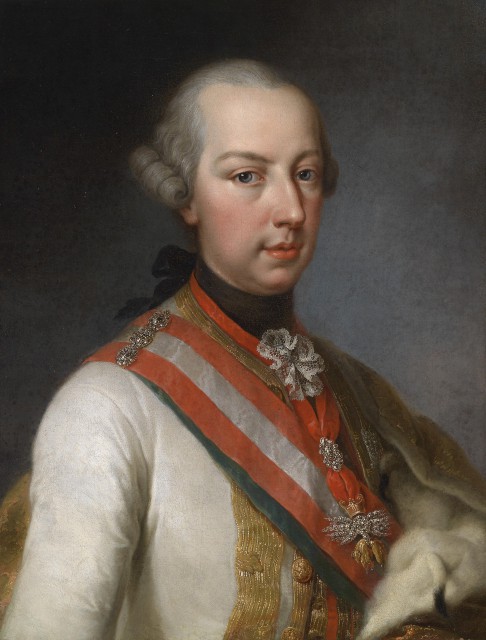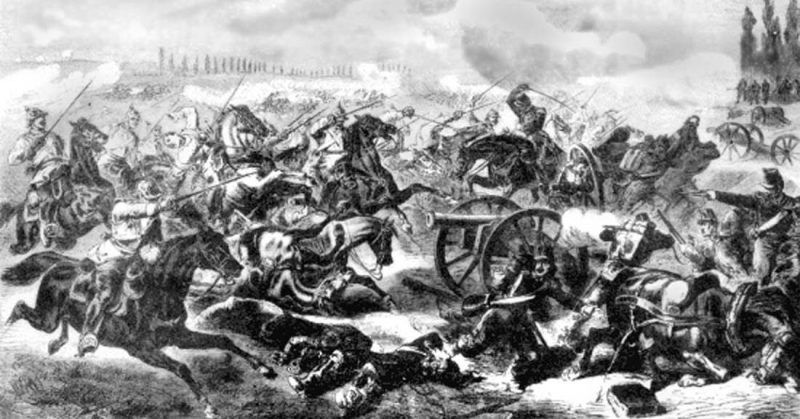Normally, it takes two to make a battle. Occasionally, three or more sides may fight, whether in alliance or all against all. In very few cases does a single army fight a battle on its own.
The Battle of Karansebes (1788) has gone down in legend as just such a battle. Modern scholars have questioned whether the battle even happened, but whether or not it did, it tells us a lot both about the Austro-Turkish war and about the way we view military history.
Joseph II and Turkey
Joseph II ruled the Holy Roman Empire, also referred to as the Austrian Empire, at the point when it was no longer either Roman or particularly holy. An enlightened absolutist, he sought to reform his country in line with the latest ideas of the 18th century. For this, he is remembered as one of the three great monarchs of the Enlightenment, along with Frederick the Great of Prussia and Catherine the Great of Russia.
But Joseph was no match militarily for the determined and skillful Frederick. A policy of expansion had been thwarted by Frederick, and the belligerent Joseph was feeling the need to prove himself. So he was drawn into a protracted and fruitless war with the Ottoman Turks from 1787 to 1791, a war in which the main winner would be Russia as that nation picked off Turkish territory elsewhere.

A Campaign in Collapse
The story of the Karansebes campaign takes place in 1788.
Though plagued by ill health, Joseph was determined to prove himself as a defender of Christendom in the face of the supposedly barbarous Turks. So he gathered an army near Belgrade, in preparation to attack the Turks in Transylvania.
Unfortunately for the Austrians, the area they camped in was beset with malaria. Over the course of six months, 172,000 men fell ill and 33,000 died, all without catching sight of the enemy. It was an omen of things to come.
When news arrived that the Turks were on the march, Joseph set out in person to face them, taking half his army. Though wasting away, barely able to keep his food down, he was not to be kept from his moment of glory.
Dissent and Drunkenness
Given the conditions in which the army had been living, it’s hardly surprising that discipline was beginning to falter. As they passed the town of Karansebes at night, a group of hussars stopped to buy liquor from local traders. When a group of footsore infantry followed them on the same mission, the hussars chased them away. They weren’t going to let the filthy infantrymen of lower status than themselves – share what they had found.
The infantry were having none of it. Thirsty and enraged by the hussars’ arrogance, they tried to frighten them away with a fake attack. Firing shots into the air, they shouted “Turkey!” Seeing what was obviously not Turkish troops menacing them, the increasingly drunk cavalry decided to join in, firing shots and shouting the same battle cry. It all seemed like a great game.
Let Battle Commence
Unfortunately, the rest of the army was not in on the joke. The rear of the column heard the noise and thought they were walking into an ambush. Panic spread, only growing as men fired at the shapes leering at them from the darkness – shapes of their own comrades.
Baggage handlers panicked and tried to force their wagons past the troops. Men fell into the river or ran for their lives. Officers ran back and forth trying to restore order, only for their shouts to be mistaken for Turkish battle cries. A full-blown stampede began.
The Emperor’s Appeal
Sick and exhausted, Joseph II struggled out of his carriage and onto a horse. Joining his officers, he tried to get the army into line. But there was now fighting throughout the army, the road littered with overturned wagons and abandoned artillery. It was only as the sun rose that they could see what had really happened. The Austrians had defeated themselves, and thousands of men had paid the price for the disaster.
When the Turks arrived two days later, they easily took Karansebes.
But Did it Happen?
It’s a great story, and one that has been widely accepted. But did it really happen?
Sadly for historians, and fortunately for Joseph II, it seems unlikely. Records from the time do not record the Battle of Karansebes. The first full account of the battle appeared decades later, and though the Austrians would be in no rush to report on what happened, it is unlikely that they could have covered up such a disaster for half a century.
This doesn’t mean that the Battle of Karansebes isn’t worth the time of military historians. Far from it – the legendary battle tells us a lot about the Austro-Turkish War, and about the biases that slip into the way we view history.
Karansebes is the Austro-Turkish War in a nutshell, a neat analogy for what was happening. The Austrians became involved at the command of their dying leader, a man of great ambition but whose poor health cut his schemes short. The Austrian forces – actually men of many different languages, nationalities and attitudes – struggled to work together. This conflict became a futile one in which Austrians died to no purpose, and which Joseph himself could do nothing to redeem.
As a lesson about history, Karansebes is a reminder that great stories are seldom entirely true. The more dramatic an incident, the more likely that it has become exaggerated over time. The Battle of Karansebes has been reported so many times because it is a great story. We should beware buying too easily into such stories.
